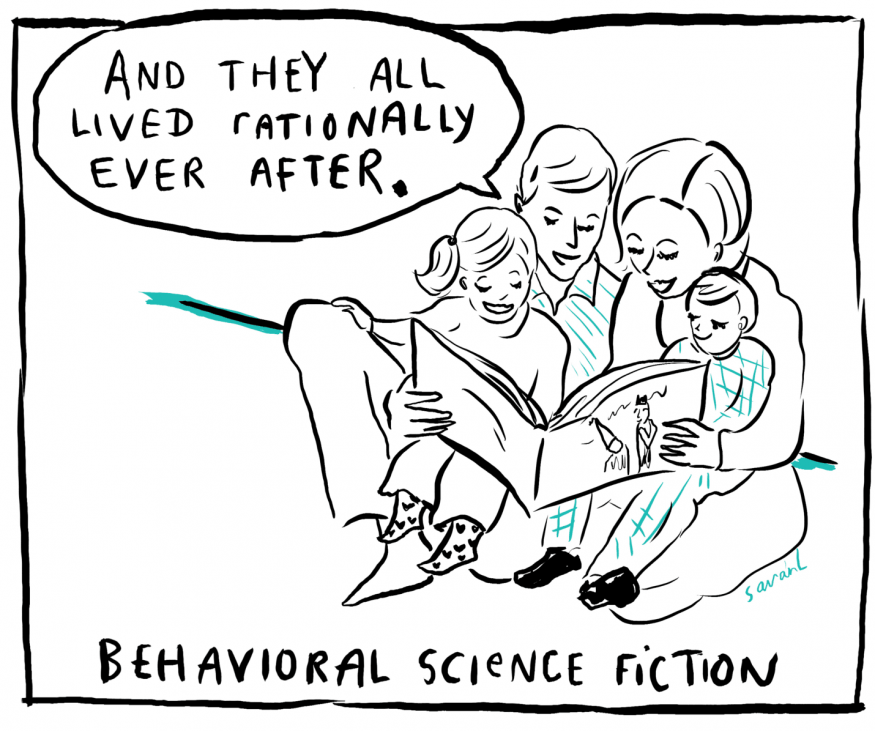
VATSAL BAJAJ – APRIL 11, 2018
John Maynard Keynes first coined the term “technological unemployment” in 1930 in his essay “Economic Possibilities for our Grandchildren.” He defined it as the “unemployment due to our discovery of means of economizing the use of labor outrunning the pace at which we can find new uses for labor.” More precisely, this term refers to an increase in unemployment caused by automation. Many have linked technological development with pessimistic views, be they the Luddites, 19th century textile workers who rebelled against the machines taking away their jobs, or Martin Ford, who, in his book Rise of the Robots warned of a jobless future due to automation. Such pessimistic views have long led to ideas of the formation of a new social class.
Historian Yuval Noah Harari predicts that just as mass industrialization created the working class, the AI revolution will create a new un-working class. In a related article for TEDx, Harari first presents an argument for why AI will take over most available jobs and then introduces his novel theory of “the useless class.” He draws parallels between his vision for the future and the Industrial Revolution, which “created a huge urban proletariat” and “led to socialism because no other creed managed to answer the unprecedented needs, hopes and fears of this new working class.” This useless class will not merely be unemployed but they will be “unemployable.” Harari paints an image of millions of people spending their time in a 3D virtual world and provides the dystopian alternative of an AI takeover of the planet. Albeit dystopian, Harari’s parallel with the industrial revolution requires us to consider more factors than just the creation of a proletariat to justify the formation of a new social class.
In The Economist special report titled “Automation and Anxiety,” Tom Standage explains that although there were temporary effects of unemployment that arose immediately after the Industrial Revolution, the formation of the working class and the proletariat led to an entirely new form of employment. He highlights how the Industrial Revolution actually caused more tasks to be automated, which prompted workers to focus on tasks that machines could not do, inducing an explosive growth in output and drastically increasing employment. This transition complements the fact that automating tasks cause an increase in demand for human workers to carry out other tasks around it that haven’t been automated yet. Tom Standage explains why this would happen: faster and cheaper ways to perform a task increases demand for the product itself as the task becomes more efficient. This phenomenon took place with the introduction of ATMs where the reduced cost of running a bank prompted more branches to open up due to increased consumer response. This stimulated an increase in bank teller employment but in a different form of occupation where they saw increased customer interaction: a non-routine form of occupation.
Most proponents of the pessimistic viewpoint mainly focus on the negatives of the AI Revolution and quote Keynes’s theory of “technological unemployment” to justify their dystopian expectation of the world. Keynes himself, however, disregarded the long-term impact of “technological unemployment” immediately after coining it, having stated that it was “only a temporary phase of maladjustment.” If, however, we take a more optimistic viewpoint, as Standage does, and believe that AI leads to a boom in demand that will further increase the demand of those skills which AI will not, at least immediately, replace: Is there still a possibility of a new social class?
In 1821, the economist David Ricardo had concerns regarding the “influence of machinery on the interests of the different classes of society.” Standage further proposes that there will be a societal shift when he explores how President Lyndon B. Johnson was warned of a divide in society between the skilled elite and unskilled underclass. Be it the Industrial Revolution or the Bolshevik Revolution, history has taught us that such class struggles have usually led to the formation of a new social class. For simplicity, we can call this AI-induced hypothetical class the “digital proletariat”—a term used in the recent Economist article “Artificial Intelligence will create new kinds of work.”
If we make parallels with the Industrial Revolution, then AI is the new steam engine, the digital proletariat is the new working class and the Luddites are the people in routine jobs. The following graph demonstrates the decrease in the demand for routine jobs as the so-called “AI Revolution” takes place. This trend, however, does not necessarily signal mass unemployment but, rather, the increased demand for new types of skills and jobs. The misconception that this might lead to mass unemployment is what economists call the “lump of labour fallacy,” which rests on the notion that “there’s only a finite amount of work to do, and therefore that if you automate some of it there’s less for people to do.” Therefore, it is predicted that jobs will become non-routine just like bank tellers after ATMs were invented.

Graph Source: The Economist
Generally, the economic response to technological developments has been an increase in demand and the formation of new kinds of jobs for the displaced workers, as seen after the Industrial Revolution. Even though there will be initial unemployment, economists predict that in the long term, the world will shift towards a job market where jobs would be less routine and would require more human interaction. Therefore, although people with routine jobs will be unemployed in the short run, this will only be temporary. In the long run, AI will likely not destroy jobs but merely redefine them.
The possibility exists, however, that most jobs will be replaced and never recover. This argument that AI will only redefine jobs assumes that AI will never be capable of taking over non-routine jobs or jobs that require the “human touch” or social skills. It is difficult to predict what kind of job market might be present in the future and what kind of new surprises technology will bring about. With the introduction of self-driving cars, AI that beats the best Go player in the world, and virtual reality, technology is advancing at a rapid rate.
There is one constant in both of these arguments. Whether you are a pessimist or an optimist, the possibility is great that the AI revolution will form a new social class. The world is changing faster than humans ever imagined. In fact, according to the think tank the McKinsey Global Institute, AI is transforming society “ten times faster and at 300 times the scale, or roughly 3,000 times the impact” of the Industrial Revolution. Such a change has always been followed by class struggle and the transformation of society in radical ways. However, whether this will be a “useless class” or the “digital proletariat,” only time will tell.
Featured Image Source: Security Intelligence
Disclaimer: The views published in this journal are those of the individual authors or speakers and do not necessarily reflect the position or policy of The Berkeley Economic Review staff, the Undergraduate Economics Association, the UC Berkeley Economics Department and faculty, or the University of California at Berkeley in general.



